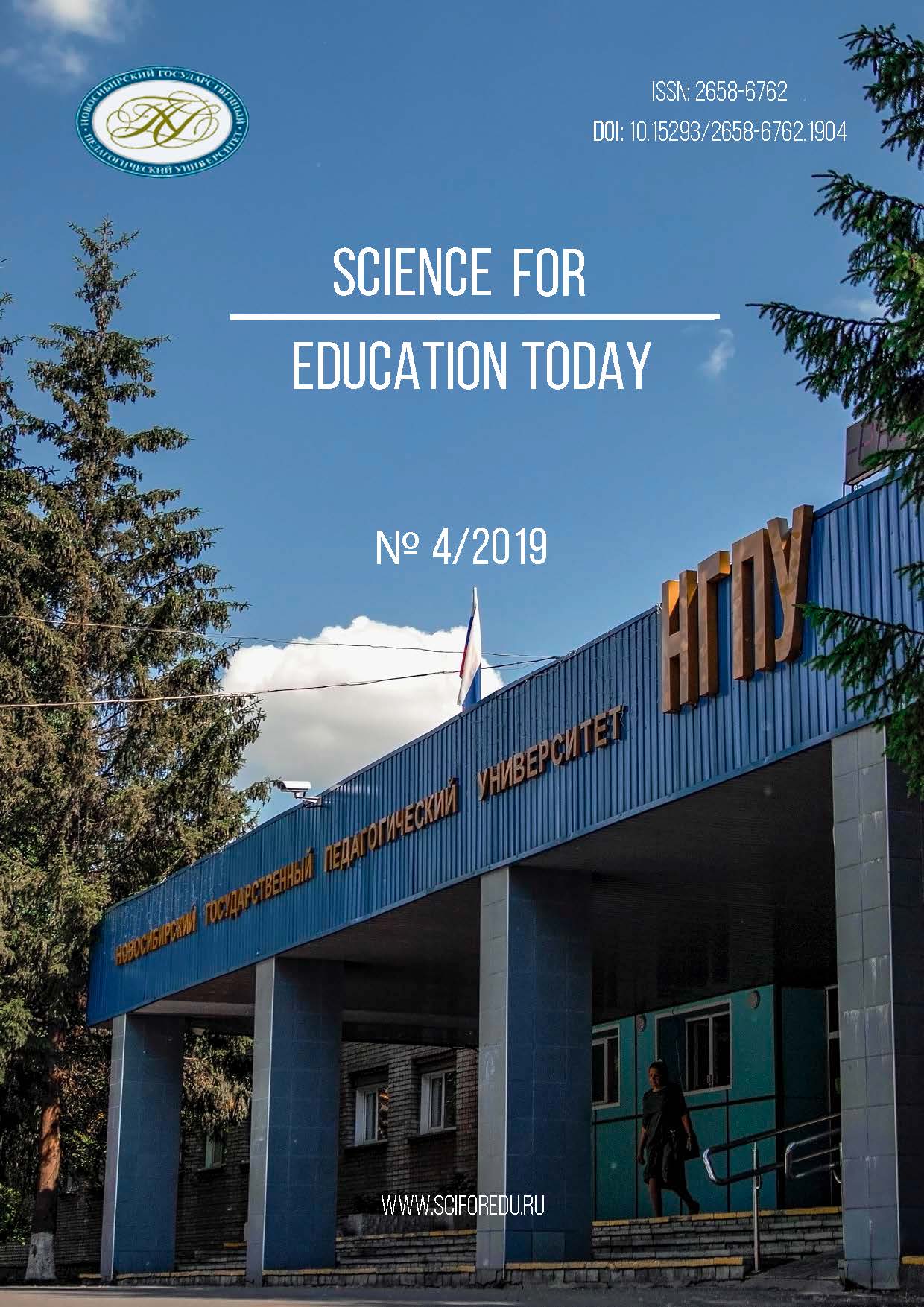Анализ современных образовательных технологий формирования национально-культурных идентичностей студентов через представление о множественности эстетических картин мира
Analysis of modern educational technologies for developing students' national-cultural identities through studying diverse aesthetic pictures of the world
Author(s): Natalia Petrovna Koptseva, Maya Gavrilovna Smolina, Ksenia Vyacheslavovna Reznikova, Veronika Adolfovna RazumovskayaSubject(s): Higher Education , Sociology of Education
Published by: Новосибирский государственный педагогический университет
Keywords: Educational technology; Modern university; National cultural identity; Aesthetic picture of the world; Art of Islamic countries; Electronic educational resource.
Summary/Abstract: Introduction. The article deals with the problem of developing world outlook, national and cultural identity of young people. The purpose of this study is to identify the structural and functional features of modern educational technologies for developing national-cultural identities of students through studying diverse aesthetic pictures of the world. Materials and Methods. The main method of this study is an educational experiment with the use of an electronic educational resource in the course ‘Fundamentals of the Art in the Countries of Islam’. In addition to the experiment, the authors used such methods as questionnaires, comparative analysis, interpretation, and scientific literature review.Results. The experiment allowed to monitor the learning process and students' activities. Thereby, the most effective elements and factors influencing the decline of student interest, as well as the regularities of student behaviors within the educational environment have been identified. In the process of doing the course students got an idea of the specifics of regional culture formation and the uniqueness of the Muslim artistic picture of the world. The results indicate students’ tolerant attitude towards the culture being studied, which makes it possible to predict the further development of mutual understanding between representatives of different religions and peoples, and therefore, reducing the threat of sociocultural conflicts. Conclusions. In conclusion, the authors summarize the identified features of modern educational technologies for developing students’ national-cultural identities through studying diverse aesthetic pictures of the world.
Journal: Science for Education Today
- Issue Year: 9/2019
- Issue No: 4
- Page Range: 247-259
- Page Count: 13
- Language: Russian

